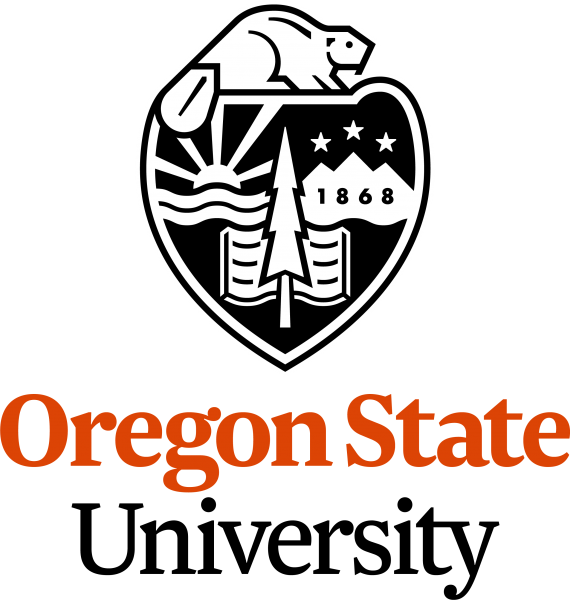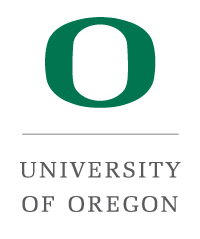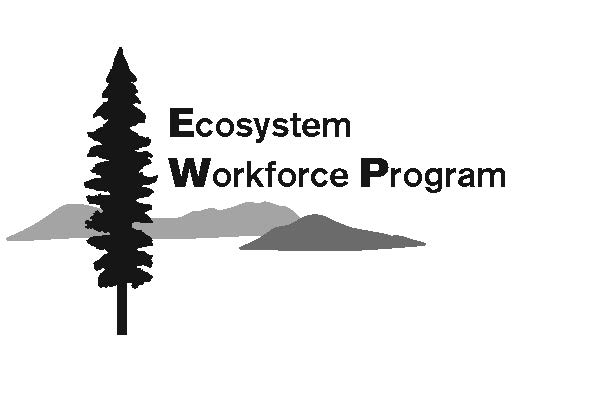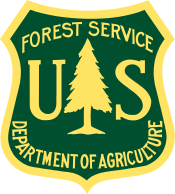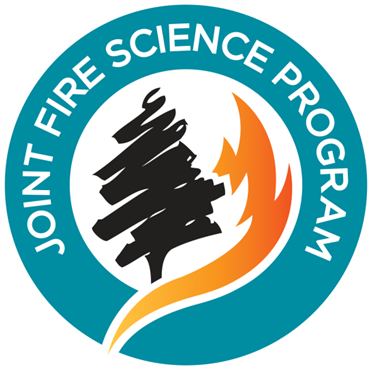Partner Feeds
Ben Young Fire Update 7/25/20 (Ben Young Fire Wildfire)
Columbia River Road Closure (Greenhouse Fire Wildfire)
Bertschi Road Fire Final Update - July 24 (Bertschi Road Fire Wildfire)
Ben Young Emergency Fire Closure modified this morning (Ben Young Fire Wildfire)
7/24/2020 Daily Update (Greenhouse Fire Wildfire)
REVISED FIRE AREA EMERGENCY CLOSURE Order Number 06-02-03-20-01-01 (Ben Young Fire Wildfire)
Ben Young Fire Update 7/24/2020 (Ben Young Fire Wildfire)
Bertschi Road Fire Update - July 23 (Bertschi Road Fire Wildfire)
Ben Young Fire Update 7/23/2020 (Ben Young Fire Wildfire)
FIRE AREA EMERGENCY CLOSURE Order Number 06-02-03-20-01 (Ben Young Fire Wildfire)
Emergency Fire Closure in effect for Ben Young Fire (Ben Young Fire Wildfire)
Bertschi Road Fire Update - July 22 (Bertschi Road Fire Wildfire)
Ben Young Fire currently burning approximately 10 miles south of Paisley (Ben Young Fire Wildfire)
Bertschi Road Fire Update - July 21 (Bertschi Road Fire Wildfire)
Bertschi Road Fire Update (Bertschi Road Fire Wildfire)
Bertschi Road Fire Update (Bertschi Road Fire Wildfire)
Celebrate safely and responsibly this 4th of July weekend!
It’s the 4th of July weekend, let’s celebrate safely and responsibly!
Visiting our public lands is a great way to celebrate. Please remember that it is illegal to discharge fireworks on or onto DNR-protected lands. To keep yourself, loved ones, and our public lands safe this 4th of July weekend, please follow these safety steps:
- It is ALWAYS illegal to light fireworks or use incendiary ammunition or exploding targets on DNR-protected lands.
- Do not park vehicles in dry, grassy areas as residual heat from exhaust systems can ignite the dry grass.
- Be sure recreation vehicles have operating spark arrestors.
- Be aware of burn restrictions. Only build campfires when and where allowed.
- Rethink any open flames if winds start to pick up – wind creates conditions that make fire difficult to put out.
- Never leave a campfire unattended and be sure it is put out before leaving the area.
- Know the current wildfire risk in your county, destination, or area you may be working in.
Did you know that 85 percent of Washington’s wildfires are caused by people? The Eagle Creek fire in 2017 is an example of what can occur. The fire was a destructive wildfire in the Columbia River Gorge in the states of Oregon and Washington, and destroyed 47,000 acres of land. The fire started when a 15-year-old boy ignited fireworks during a burn ban. Knowing these tips and other tips to prevent a wildfire is always a good idea. Whether it is a firework, cigarette, or anything that creates a spark, it is important to remember “One less spark, one less wildfire.”
Be careful and be thoughtful of COVID-19 restrictions and social distancing. There is an extra strain on the medical community at this time. Everyone needs to be careful – we all play a role in preventing wildfires. It’s not just that we have to battle wildfires, but we also have to battle risk of exposure to the virus at every wildfire our firefighters go out on.
Report fire
If you see smoke or fire, call 911. Even if you’re unsure, call anyway. A false alarm is better than a wildfire.
What You Need to Know Before Camping This Summer
The weather’s getting warmer, and that means it’s finally camping season. Many Washingtonians have waited months to get back outdoors, and they’re more eager than ever for recreation after being cooped up by the COVID-19 pandemic.
At the Department of Natural Resources (DNR) we are excited to welcome you back onto public lands and hope you will do your part to keep our lands, our communities safe while outdoors. Restrictions on camping are beginning to loosen, but as people start to venture back into campgrounds, it’s essential that campers do their part to keep themselves, their families, and their communities safe. Read on for guidance on responsible camping in Washington state.
When is camping reopening?
On May 29, the DNR, Washington State Parks and Recreation Commisison (Parks), and Washington Department of Fish and Wildlife (WDFW) announced that camping in 22 counties would begin to to reopen on Monday, June 1 for 22 counties in Washington state.
What do I need to know before I go camping?
The most important thing to do is stay as close to home as possible. If your county is still in Phase 1, please only visit day use facilities in your area. If your county is in Phase 2, you are allowed to go overnight camping (in campgrounds and in dispersed camping areas) within other Phase 2 counties.
If you are in Phase 1, don’t gather with anyone outside your immediate household. If you are in Phase 2, don’t camp in groups larger than 5 people, unless you’re all within the same household. Learn more about Washington’s coronavirus phases here.
Not all counties that are in Phase 2 are opening up for camping. It is best to check with the land manager where you would like to camp to make sure that the camping area is open. Check the status of campsites for DNR-managed land here. Be sure to make a reservation on land managed by Parks and check the list of wildlife areas with established campsites available on WDFW-managed land.
As always, make sure you and your whole family continue to follow the Recreate Responsibly Guidelines. Those guidelines are: know before you go, practice physical distancing, stay close to home, plan ahead, play it safe, and leave no trace.
Keep our firefighters home
Never forget to put your campfire completely out before leaving it unattended. Remember, campfires are only allowed in dedicated fire rings and are not allowed while dispersed camping. Dispersed camping is when you just find a spot to set up your tent while not being in a designated campsite. More resources on how to have a safe campfire can be found here.
Those are the basics, but let’s break it down even more:
Before you go:
- Know what is open and make sure to have a Plan B. Most DNR campgrounds are first-come, first-served so they may be full when you arrive.
- Take everything you need with you (toilet paper, soap, water, hand sanitizer, and face coverings). DNR campsites a primitive and most don’t have running water.
- Don’t forget to bring your Discover Pass.
- Be sure pack to all your food and supplies, as businesses may still be closed in the town where you are camping.
- And, again, stay as close to home as possible.
When you get there:
- Practice physical distancing, especially with other campers.
- Make sure to put your campfire out. If it is too hot to touch, it is too hot to leave.
- Try to avoid cash transactions and bring your own firewood, keeping in mind not to travel too far with firewood (that can spread tree pests — learn more here).
More resources can be found at recreateresponsibly.org. If you are out recreating responsibly, make sure to snap a pic, share it with us on social media (use #RecreateResponsibly or #DiscoverDNR), and add a #RecreateResponsibly sticker if creating an Instagram story.
Camping is a great way to get the reprieve that so many people need right now. We at DNR are excited to welcome you back onto our public lands, but we all need to do our part. Recreating responsibly makes it more likely that we can continue to camp all summer long in a secure and sustainable way.
Now, let’s get outside while also staying safe.
DNR, Puget Sound Corps Team Up with Tulalip Tribes to Remove Harmful Invasive Species
By Natasha Coumou, assistant restoration ecologist with the Tulalip Tribes
Invasive plants can increase wildfire risk in urban areas and pose a threat to fish and wildlife habitat, including salmon streams and forests.
That’s why the Tulalip Tribes’ Natural Resources Department, a Puget Sound Corps crew, and the Washington State Department of Natural Resources (DNR) joined forces earlier this year to remove scotch broom, poison hemlock, invasive blackberry, and reed canary grass in parts of Snohomish County – including on the Tulalip Reservation. In February and early March, crews reduced and removed these invasive species on approximately 5 acres of land and a 1-mile stretch of urban trail.
DNR funded the Puget Sound Corps’ work on this Tulalip-led project. The Puget Sound Corps is a multi-agency effort and part of the broader Washington Conservation Corps (WCC) program overseen by the state’s Department of Ecology. The WCC – an AmeriCorps program – creates future leaders through community involvement and mentorship and has more than 350 members and experienced staff statewide who restore critical habitat, build trails and respond to local and national disasters.
Here is what this one crew was able to accomplish for the Tulalip Tribes in parts of Snohomish County:
Scotch broom removal
Scotch broom is prevalent in Snohomish County and a potential fire hazard that can increase the intensity of grassland and forest fires. On the Tulalip Reservation, scotch broom has dispersed throughout urban forests, trails and public areas.
Seeds of the scotch broom plant can remain viable for several decades. The Puget Sound Corps crew temporarily increased the tribes’ capacity to deal with scotch broom in areas that have a great potential to further disperse its seeds and exponentially increase its presence elsewhere.
One of these areas is the forestry wood yard, where the Tulalip’s natural resources staff temporarily store firewood that it redistributes throughout the community. Scotch broom there creates a continuous ground fuel by establishing itself between woodpiles, and its seeds are easily transported to other areas of the reservation. There, the crew cleared about a 1-acre area by mechanical removal.
- Wood yard full of scotch broom. (Tulalip Tribes photo)
- Wood yard after scotch broom removal. (Tulalip Tribes photo)
Another area where scotch broom has invaded is the Qwuloolt Estuary in the city of Marysville, which is adjacent to a residential area. Besides the increased fire risk, the water can carry scotch broom seeds to other areas in the Snohomish River Estuary. The acre of scotch broom removal also freed up habitat for native trees and plants that support healthy salmon populations known to inhabit the Qwuloolt, including Chinook salmon, the primary food source for Puget Sound southern resident orcas.
Members of the Puget Sound Corps crew with some invasive scotch broom they removed during a project to support forest health in Snohomish County. (Tulalip Tribes photo)Poison hemlock removal
Poison hemlock is a non-native invasive plant that can be fatal if ingested by humans and many animals, and it is prevalent in disturbed areas, such as trails throughout the region that are frequently visited by the public. One of the most frequented public trails by the Tulalip’s health clinic has been overrun by this plant and pose an immediate danger to families using the trail.
The Puget Sound Corps crew cleared extensive patches adjacent to the trail to reduce poison hemlock density, and to decrease the immediate risk to the public of encountering this plant. During their time, the crew manually removed, filled and disposed of more than 30 large (about 100-gallon) trash bags of poison hemlock, reducing fire hazard and the risk of public exposure to this toxic plant.
Reed canary grass management
The crew also removed reed canary grass from a restoration site that was established on the Qwuloolt Estuary. In an effort to restore a resilient landscape, the Tulalip Tribes planted native evergreen trees (shore pine and sitka spruce) to outcompete the invasive grass, which had taken over a contiguous swath of land.
The grass posed an increased fire risk by creating uninterrupted horizontal fuel in an area adjacent to residential housing. To reduce its prevalence and help the establishment of a hardy, fire resilient urban landscape, the crew mowed about 3 acres of reed canary grass.
Puget Sound Corps crew mow Reed Canary grass to aid Shore Pine and Sitka Spruce Establishment. (Tulalip Tribes photo)Additional projects
During their time with the Tulalip Tribes, the Puget Sound Crew members removed non-native blackberry and scotch broom from a forested buffer on the banks of the Skykomish River in Monroe. The Tulalip Tribes are in the process of acquiring this area from the PCC Farmland Trust to put it in perpetual conservation.
A riparian forested buffer adjacent to the river was established decades ago to enhance habitat and water quality for salmon and other species, and the mature forest is a testament to the project’s success. Where younger maturing forests exist, however, woody invasive species like blackberry and scotch broom are competing with beneficial native vegetation.
To maintain a healthy forest, invasive species management is paramount. The crew cleared an acre of the buffer of blackberry and scotch broom, allowing for a more resilient landscape. While working on this project, members also cleared a trail that was overgrown with vegetation to provide access to a future restoration area.
The collaboration between DNR, the Puget Sound Corps and the tribes significantly expanded the capacity of the Tulalip’s Natural Resources Department to remove invasive species on and off the reservation, benefiting communities, the watershed and urban forests.
We’re Reopening State Lands: Here’s What You Should Know
The Department of Natural Resources (DNR) is reopening state-managed public lands on May 5th, 2020. After following Governor Inslee’s Stay Home, Stay Healthy order and being cooped up for a month, we are all eager to get back onto the trails. While this is exciting news, it’s important to know what to expect and how to keep everyone safe as lands open back up.
Beginning on May 5th, state parks, wildlife areas, and DNR recreation sites will reopen for day-use only. This is with the expectation that visitors follow appropriate physical distancing standards. Since DNR manages over 160 recreation sites across 3.3 million acres of state trust lands, it may take several days for staff to access all sites and unlock gates.
State-managed boat launches, marinas, and recreational fishing in Puget Sound and Columbia River will also reopen for day-use services only. All overnight accommodations, including all camping, will remain closed until further notice.
During this slow process back into normalcy, some recreation locations may have limited restroom services. It’s best to be self-sufficient by bringing your own supply of water, soap, hand sanitizer, toilet paper, and masks with you. Don’t forget to pack your Discover Pass either!
A Discover Pass is always required to park your vehicle at recreation lands, State Parks, and water-access sites managed by DNR and The Washington State Department of Fish and Wildlife (WDFW). Washington State Parks has named the 100 parks that will reopen and the few that will stay closed come May 5th.
We are asking people to continue to adhere to safety precautions and practice physical distancing as lands begin to reopen. If we notice issues of crowding, location-based closures may happen. There may also be closures for health-related issues so it best to check our website before headed out on your adventure.
Governor Inslee stated in the April 27th press conference that “if we see a sharp uptake in the number of people who are getting sick or are not following appropriate steps, then we won’t hesitate to scale this back again.”
As reopening approaches, we should all consider the steps we need to take to protect ourselves and those around us. If the outdoors is calling to you, be sure to be a responsible recreationist. To do this we ask that you plan ahead, come prepared, and practice good hygiene. For more details on responsible recreation, download our #RecreateResponsibly Tip Sheet.
“Because of our shared sacrifice and the heroic work of our first responders, doctors, and nurses, we are able to reopen public lands. Reconnecting people with nature is the first step of a long journey back to normalcy.” – Commissioner of Public Lands, Hilary Franz
We look forward to welcoming all our recreationalists back to our lands. With your help and responsible actions we can keep our recreation sites open for years to come.
Additional Resources:
- You can find the latest information about DNR recreation openings here.
- Have questions about fishing and hunting? Check WDFW’s information here.
- Have more questions? Download our frequently asked questions.
- Get the latest information on how the coronavirus is affecting Washington State by visiting the Washington State Coronavirus Response (COVID-19) page.
